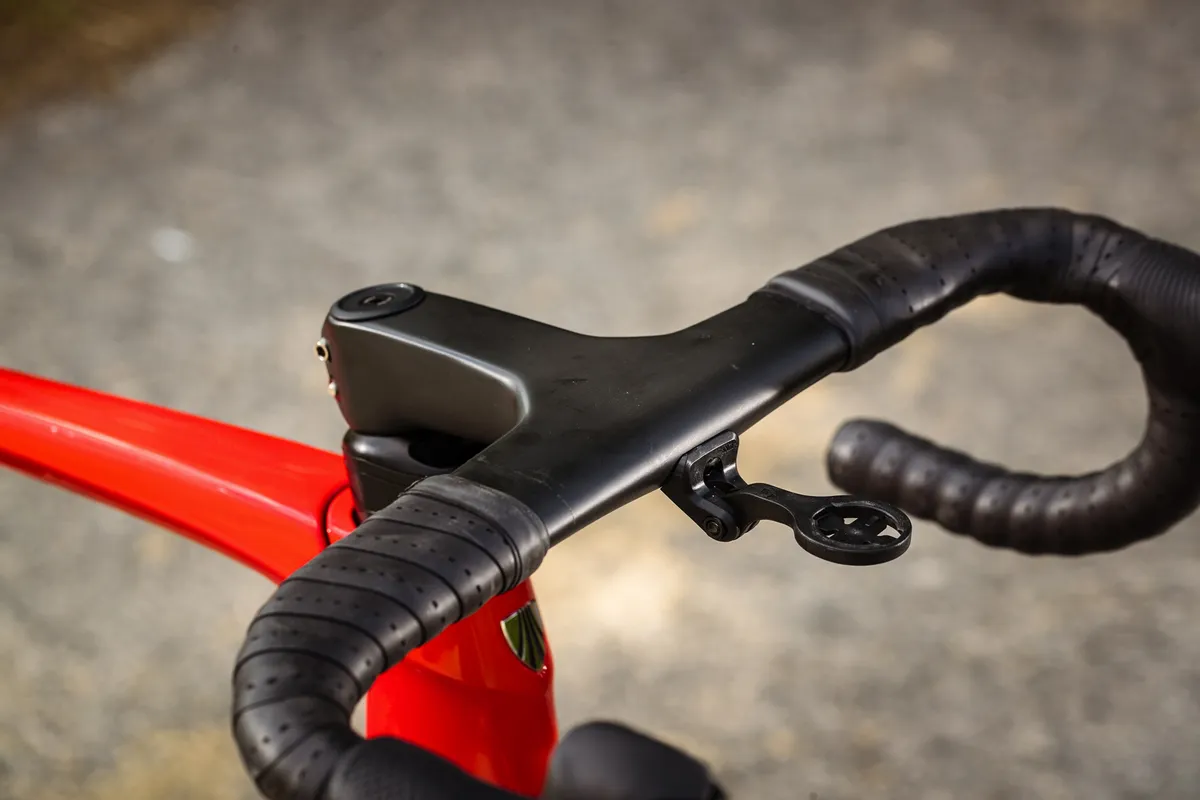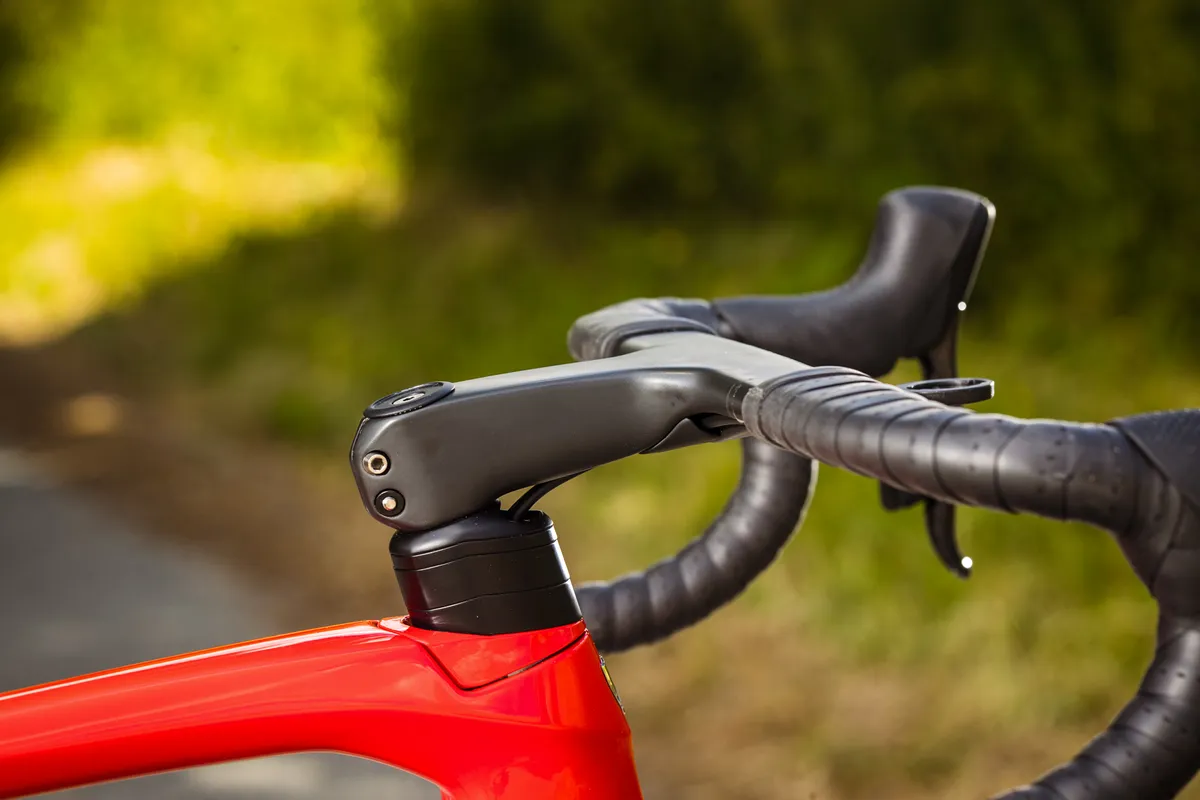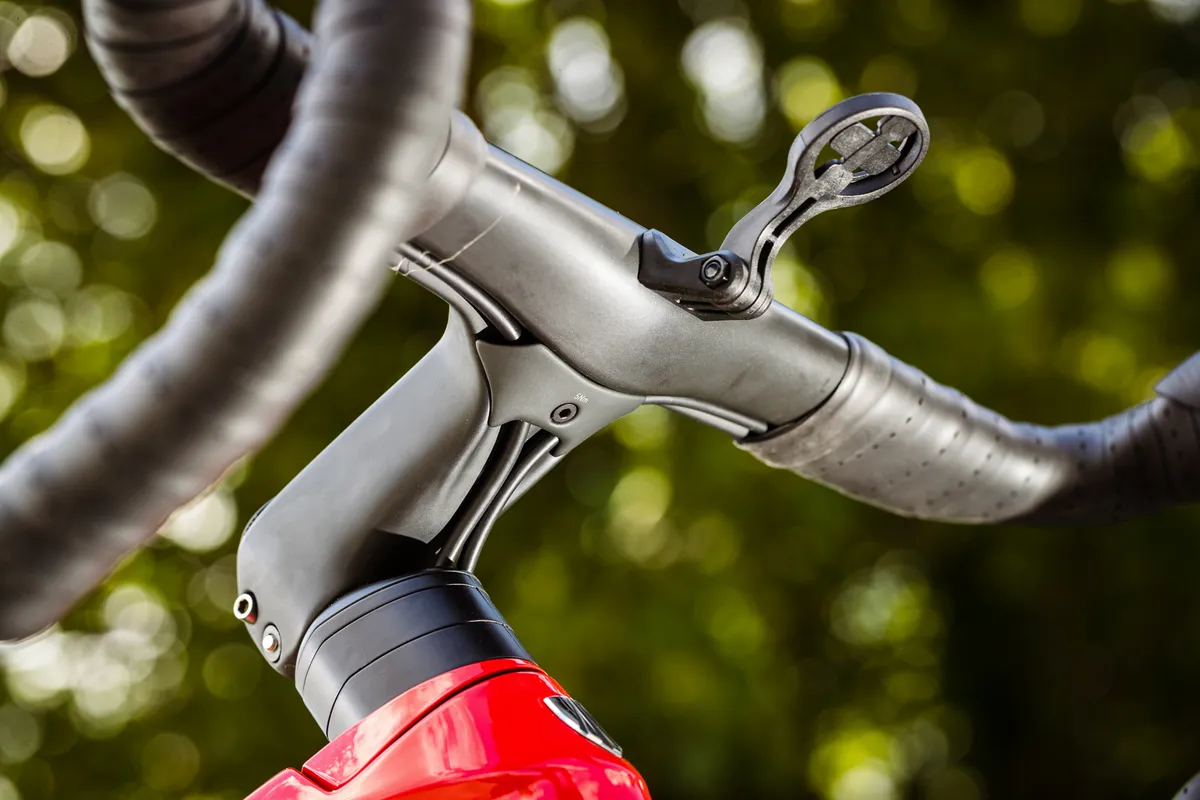The new 2021 Trek Emonda goes disc-only, sees a shift towards a more all-round aero-focussed race bike, gets larger (unofficial) tyre clearances, sees a drop in weight on the top-end disc frameset and – joy of joys – adopts a threaded bottom bracket.
The original Emonda was focussed solely on achieving a low weight, and it was possible to build it up as a truly featherweight bike.
Though the bike saw gradual changes over successive generations – including the adoption of disc brakes and increased tyre clearances – the Emonda platform stayed true to its original goal.
Industry trends and public taste has moved on since then, though – while there will always be a time and a place (and public appetite) for truly lightweight road bikes, many riders now expect an all-round race bike to perform well in a broader range of scenarios. This new bike reflects that.
Trek has also launched a brand new integrated cockpit and four new wheelsets to accompany the new bike.
More on the new 2021 Trek Emonda
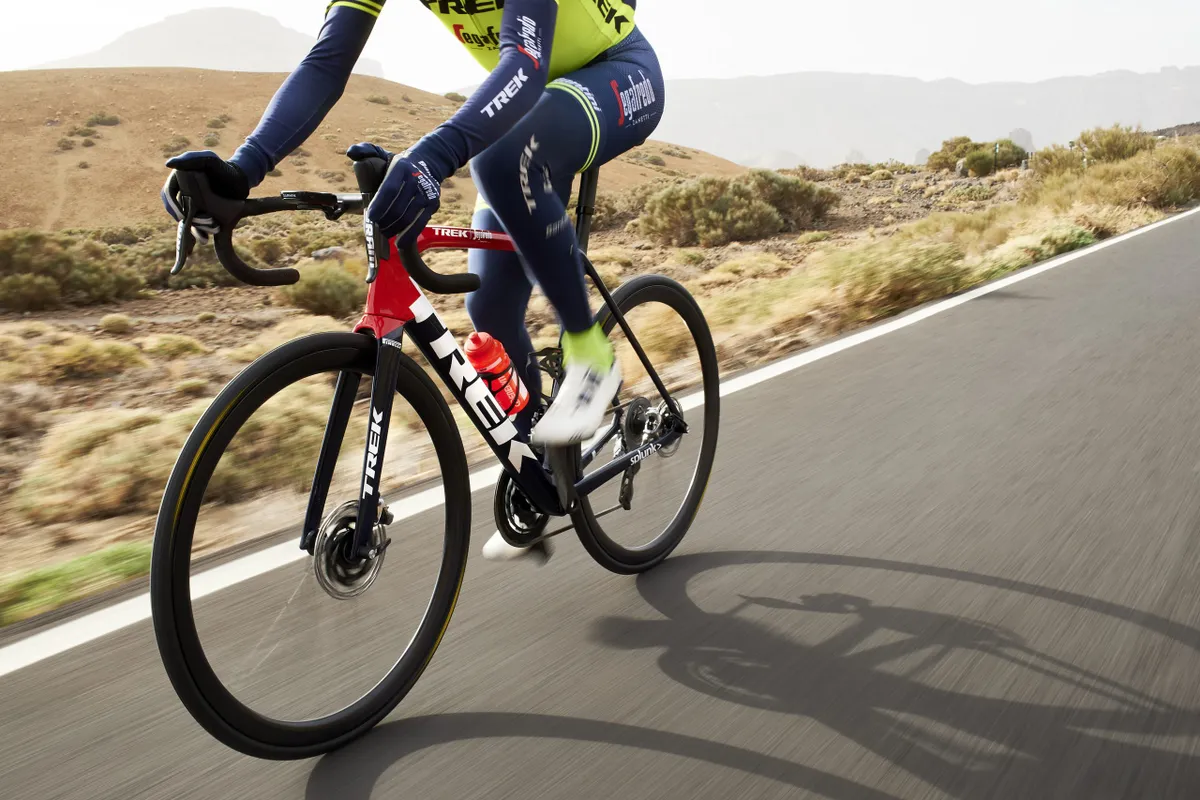
Though the needs of pro riders hardly reflect our own, this shift in attitude towards bike design is well-illustrated by the pro teams that race on Trek bikes, such as Trek-Segafredo.
Riders on these teams have free choice between Trek’s Domane endurance bike, the Madone aero bike and the Emonda.
Trek claims most riders were happy with the Emonda, but wanted something ever so slightly more aero while maintaining its low weight for races over mixed terrain.
As such like every other bike to hit the market in recent years, the new Emonda is claimed to be considerably more aero and lighter than its predecessor in the top-spec disc brake options.
With this new all-rounder package, Trek claims it expects teams to ride the new Emonda on seven out of ten race days (whenever everyone is allowed back outside for racing).
Climb-specific aero optimisation is now a thing
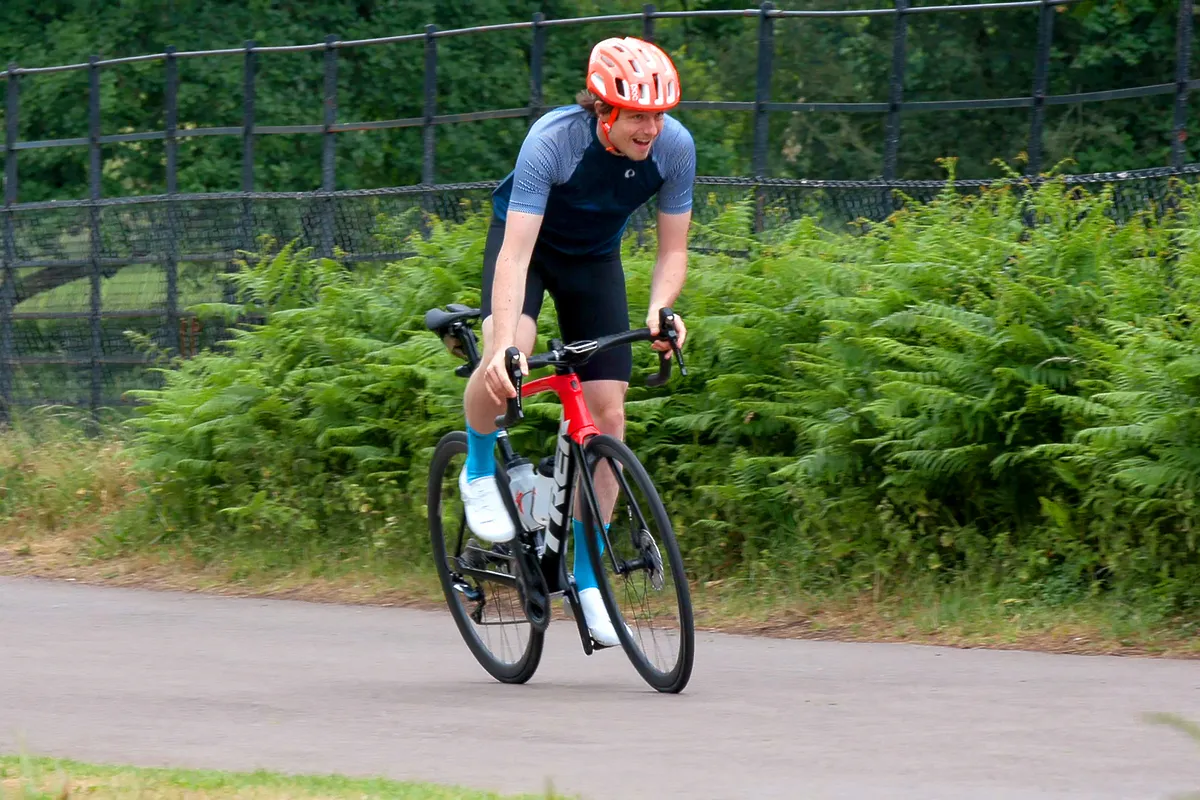
The aero development of the new Emonda was focussed on the terrain and average speeds encountered on Alp D'Huez – arguably the most iconic climb of the French alps and one that has featured in numerous Tours de France.
Yes, you read that right – climb-specific bikes are now a thing.
Jesting aside, with this approach, Trek analysed the average speed at which a rider would climb on Alp D’Huez – balancing mid- and low-speed aero performance against an inevitable increase in weight when aero frame shapes are used.
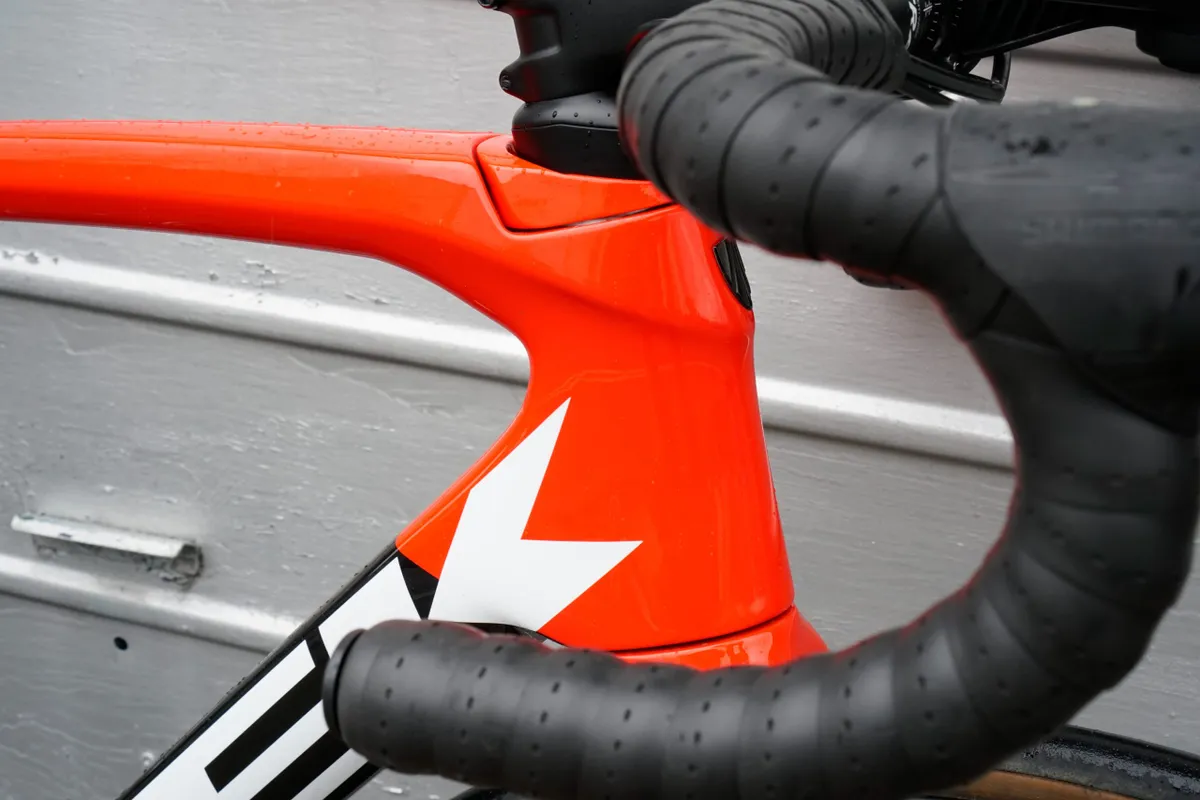
The resulting shape is very different to the outgoing Emonda, moving away from fairly traditional tube shapes to adopt a more Domane-like silhouette, with hints of the Madone’s aero profiling around the headtube.
| Race | Distance (km) | 2018 Emonda Finish Time (min) | 2021 Emonda Finish Time (min) | Time Delta (seconds) | Sec/hr Delta |
|---|---|---|---|---|---|
| Alpe D'Huez | 13.85 | 47.00 | 46.75 | 15 | 19.1 |
| Flagstaff | 4.09 | 11.83 | 11.73 | 6 | 30.4 |
| Angliru | 7.45 | 34.13 | 33.95 | 11 | 19.3 |
| Etna Short | 15.25 | 45.15 | 44.88 | 16 | 21.3 |
| Etna Long | 28.21 | 75.32 | 74.95 | 22 | 17.5 |
| Mt Evans | 14.65 | 32.00 | 31.82 | 11 | 20.6 |
| Mt Fuji | 23.62 | 56.62 | 56.27 | 21 | 22.3 |
| Stelvio | 21.3 | 65.55 | 65.20 | 21 | 19.2 |
| Taiwan KOM Challenge | 86.5 | 291.68 | 290.35 | 80 | 16.5 |
| Willunga | 5.98 | 14.42 | 14.35 | 4 | 16.6 |
Trek quantifies these improvements in a fairly unconventional way, claiming that, for a 70kg rider, the new bike will save you 18 seconds per hour when climbing an 8% grade at a fairly spicy 350W, when compared to the old Emonda.
On the flat riding at the same power, you should expect to save a minute every hour.
According to Trek, the new Emonda is faster than the latest generation of the Domane in terms of aero performance, but only slightly. However, the weight is, obviously, much lower on the Emonda as it lacks all of the IsoSpeed gubbins and has no all-road leanings.
The new bike is said to sit midway between the old Emonda and Madone but, again, the Emonda is a considerably lighter bike.
This is a very simplistic overview of the aero development of the bike, but gives you a taste of what Trek was trying to achieve – creating a light-enough all-round race bike that brings some aero benefit at a broad range of speeds.
For what it’s worth, Trek has been (refreshingly) open about exactly how it tested the Emonda and, if such things tickle your pickle, I’m sure there will be plenty more to read on the subject on the Trek website.
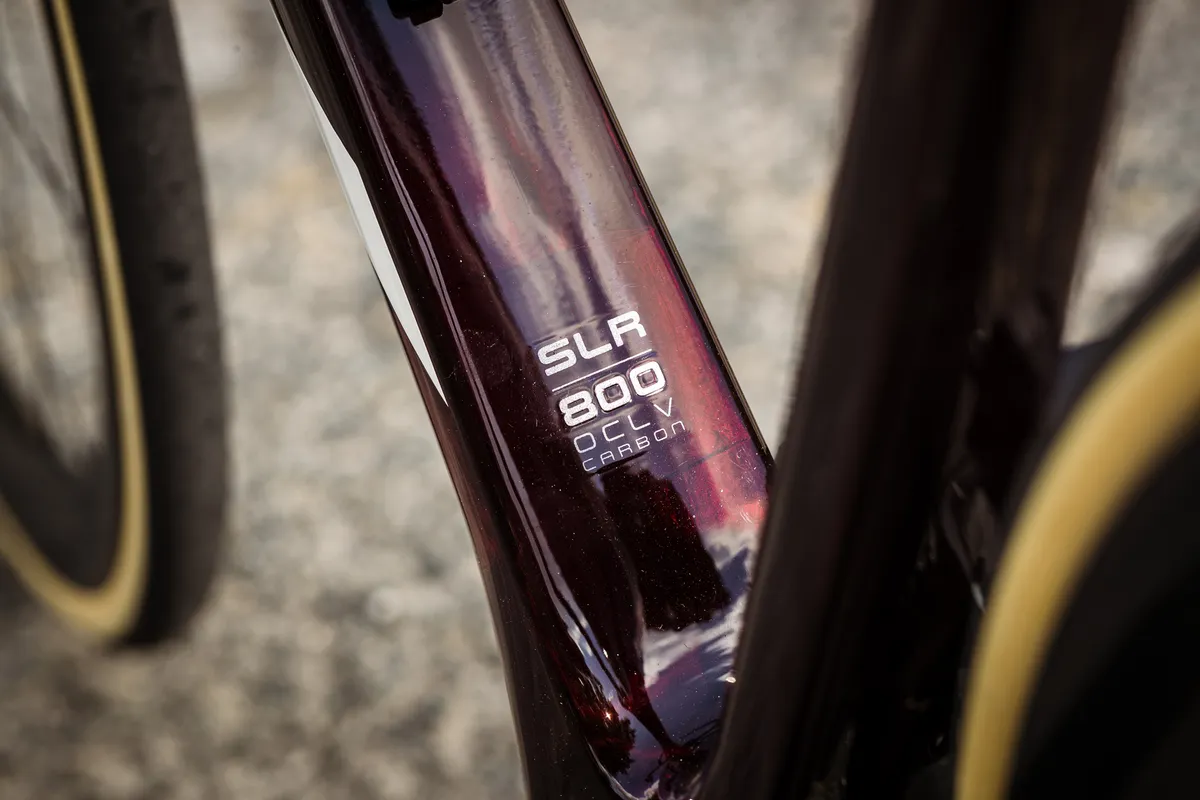
As the overall aero shapes of the new frameset are less structurally efficient than the old frame, Trek devised OCLV 800, a new layup that is claimed to be 30% stronger than OCLV 700, while being 8% lighter. This new layup is used in select areas to increase stiffness without adding weight. All of this adds up to a sub-700g SLR-level frame when unpainted, with the derailleur hanger and in an unspecified size. The unpainted fork is claimed to weigh 365g with an 220mm steerer.
The SL-level Emonda features the exact same frame shape and internal cable routing as the SLR frameset, but is constructed using Trek’s lower-level existing OCLV 500 layup. This frame weighs 1,142g, again, unpainted and in an unspecified size. The fork weighs 380g.
H1.5 for everyone
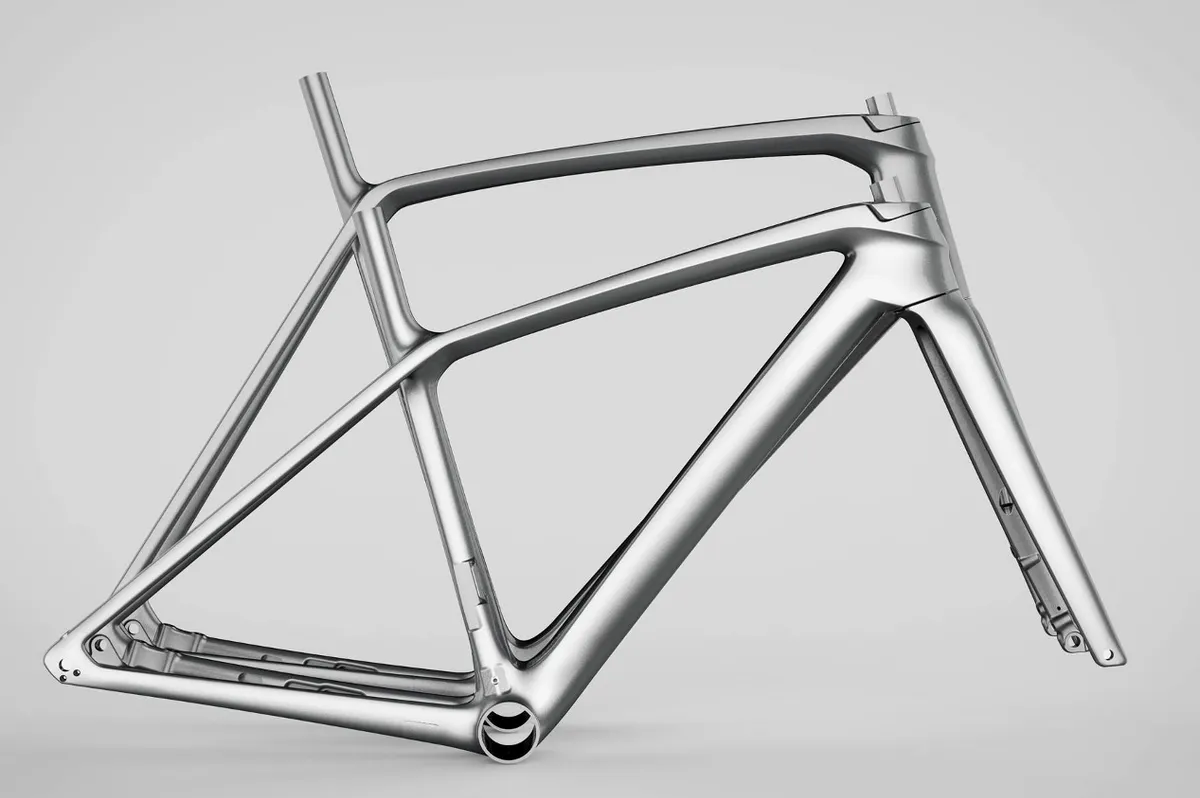
Trek has significantly altered the geometry of the Emonda for 2021, and it is now only available in the brand’s middle-of-the-road H1.5 fit.
H1.5 sits pretty much in the middle of Trek’s formerly-available and wildly aggressive pretty-much-pro-only H1 geometry and its actually-accessible-to-mortals endurance-focussed H2 fit.
The resulting shape strikes a good balance between real-world usability and allowing riders to get a low and fast setup should they so wish.
We’ve covered the geometry of the bike in depth in our review of the new Emonda, so head there for the full scoop.
| 47cm | 50cm | 52cm | 54cm | 56cm | 58cm | 60cm | 62cm | |
|---|---|---|---|---|---|---|---|---|
| Seat tube length (mm) | 42.4 | 45.3 | 48.3 | 49.6 | 52.5 | 55.3 | 57.3 | 59.3 |
| Seat tube angle (degrees) | 74.6 | 74.6 | 74.2 | 73.7 | 73.3 | 73 | 72.8 | 72.5 |
| Head tube length (mm) | 100 | 11.1 | 12.1 | 13.1 | 15.1 | 17.1 | 19.1 | 21.1 |
| Head tube angle (degrees) | 72.1 | 72.1 | 72.8 | 73 | 73.5 | 73.8 | 73.9 | 73.9 |
| BB Drop (mm) | 7.2 | 7.2 | 7.2 | 7 | 7 | 6.8 | 6.8 | 6.8 |
| Chainstay length (cm) | 41 | 41 | 41 | 41 | 41 | 41.1 | 41.1 | 41.2 |
| Front-centre (cm) | 57.3 | 57.5 | 57.7 | 58.1 | 58.3 | 59 | 59.9 | 60.7 |
| Offset (cm) | 4.5 | 4.5 | 4.5 | 4.5 | 4 | 4 | 4 | 4 |
| Trail (cm) | 6.8 | 6.2 | 5.8 | 5.6 | 5.8 | 5.7 | 5.6 | 5.6 |
| Wheelbase (cm) | 97.2 | 97.4 | 97.7 | 98.1 | 98.3 | 99.2 | 100.1 | 101 |
| Standover (cm) | 69.2 | 71.1 | 73.2 | 74.4 | 76.8 | 79.3 | 81.1 | 82.9 |
| Frame reach (cm) | 37.3 | 37.8 | 38.3 | 38.6 | 39.1 | 39.6 | 39.9 | 40.3 |
| Frame stack (cm) | 50.7 | 52.1 | 53.3 | 54.1 | 56.3 | 58.1 | 60.1 | 62 |
| Seat height max (tall cap, mm) | 65 | 68 | 71 | 73.5 | 76.5 | 78.5 | 80.5 | 82.5 |
| Seat height min (tall cap, mm) | 59 | 62 | 65 | 67.5 | 70.5 | 72.5 | 74.5 | 76.5 |
| Seat height max (short cap, mm) | 61.5 | 64.5 | 67.5 | 70 | 73 | 75 | 77 | 79 |
| Seat height min (short cap, mm) | 55.5 | 58.5 | 61.5 | 64 | 67 | 69 | 71 | 73 |
Wide and fast
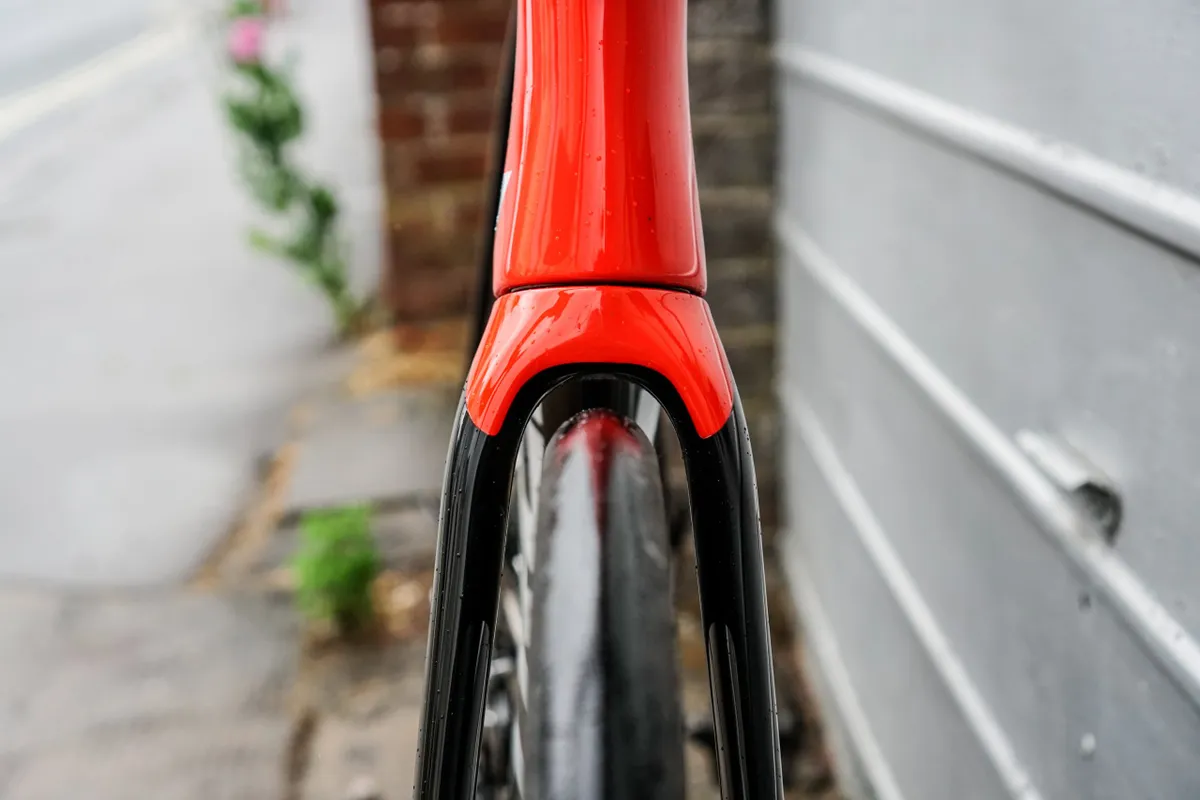
Aero isn’t just everything with the new bike – tyre clearance on the new 2021 Trek Emonda is now officially rated to clear a 28mm tyre, but it’s obvious you could squeeze something considerably larger in there.
With a 28mm (measured) Panaracer Race D Evo tyre mounted to Bontrager Aeolus Elite 35 wheels (more on those in a moment) there is roughly 9mm of clearance on either side of the tyre and about 8mm above the tyre at the fork.
Out back, there is no seat stay bridge to contend with, but clearance drops down to roughly 7mm on either side of the tyre at the chainstay.
Wider tyres have consistently been shown to have lower rolling resistance and result in less rider fatigue in independent testing, so while a 28mm will suffice in most instances, it’s good to know you can (unofficially) squeeze something squashier in there.
Bye Bye BB90
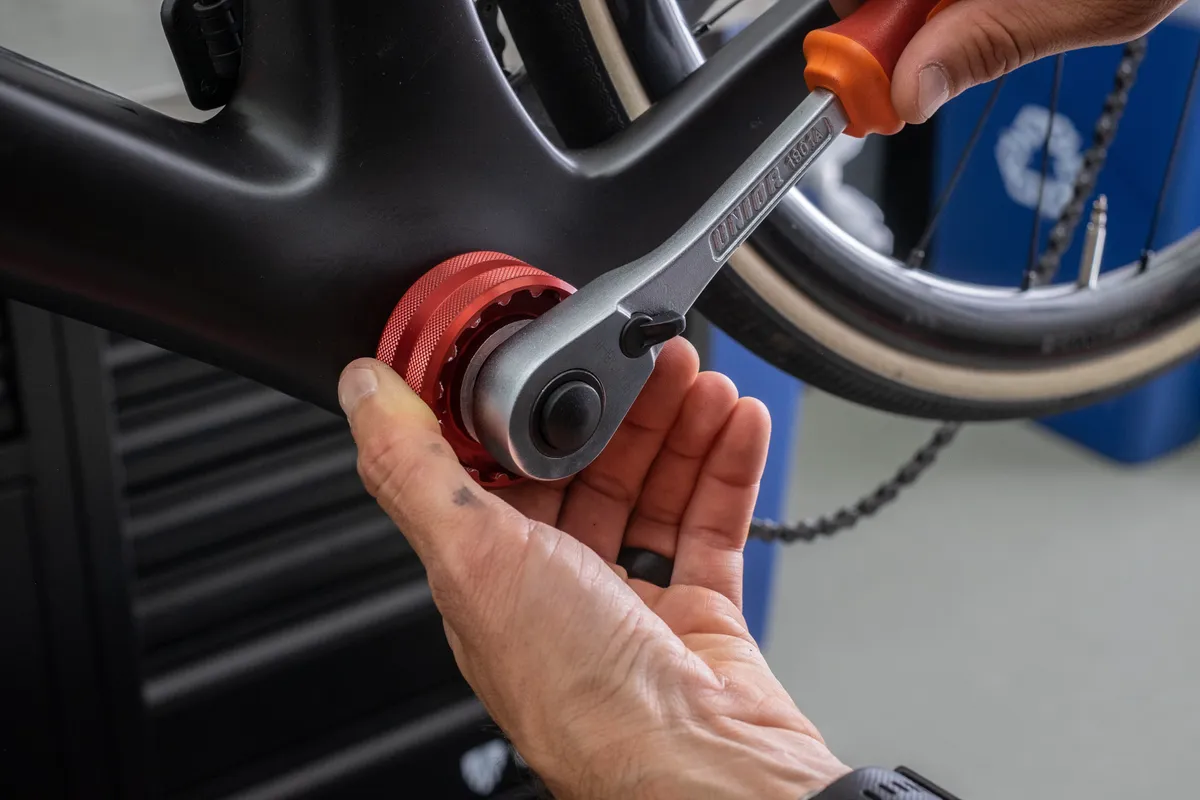
The new Emonda ditches Trek’s proprietary BB90 bottom bracket standard in favour of the threaded T47 standard.
We’re not afraid to say it – BB90 was rubbish.
It was a simple and lightweight system, but as the bearings pressed straight into the frame, it relied on super tight tolerances to work well – and sometimes it didn’t. The system also limited riders to 24mm spindle cranksets.

Adopting T47 – as has been done on all of Trek’s new road and gravel bikes – gets around all of these problems with only a moderate increase in weight. Critically, it’s also a far easier system for home mechanics to maintain. This change will please the cycling commentariat, so happy smiles all round.
It now seems inevitable that whenever the Madone gets its next update, it will also move to a T47 bottom bracket shell.
An aero cockpit that isn’t a nightmare to live with
The top-end bikes in the Emonda range get the new Bontrager Aeolus RSL VR-C integrated cockpit/bar-stem.
This new cockpit is claimed to save 7 watts with a 65 kg rider averaging 28 mph with a 7 mph average wind speed on a flat surface compared to the outgoing Bontrager XXX cockpit.
The new Aeolus RSL VR-C cockpit is available in 14 different sizes and is claimed to weigh 272g in the smallest 38cm wide option with an 80mm 'stem’.
The new cockpit houses the bike’s cables and hoses in a neat channel on the underside of the bar and routes them directly into the head tube.
This channel is covered with a removable faceplate that will greatly ease cable routing – there should be no hopeless poking about with frustrating internal routing here.
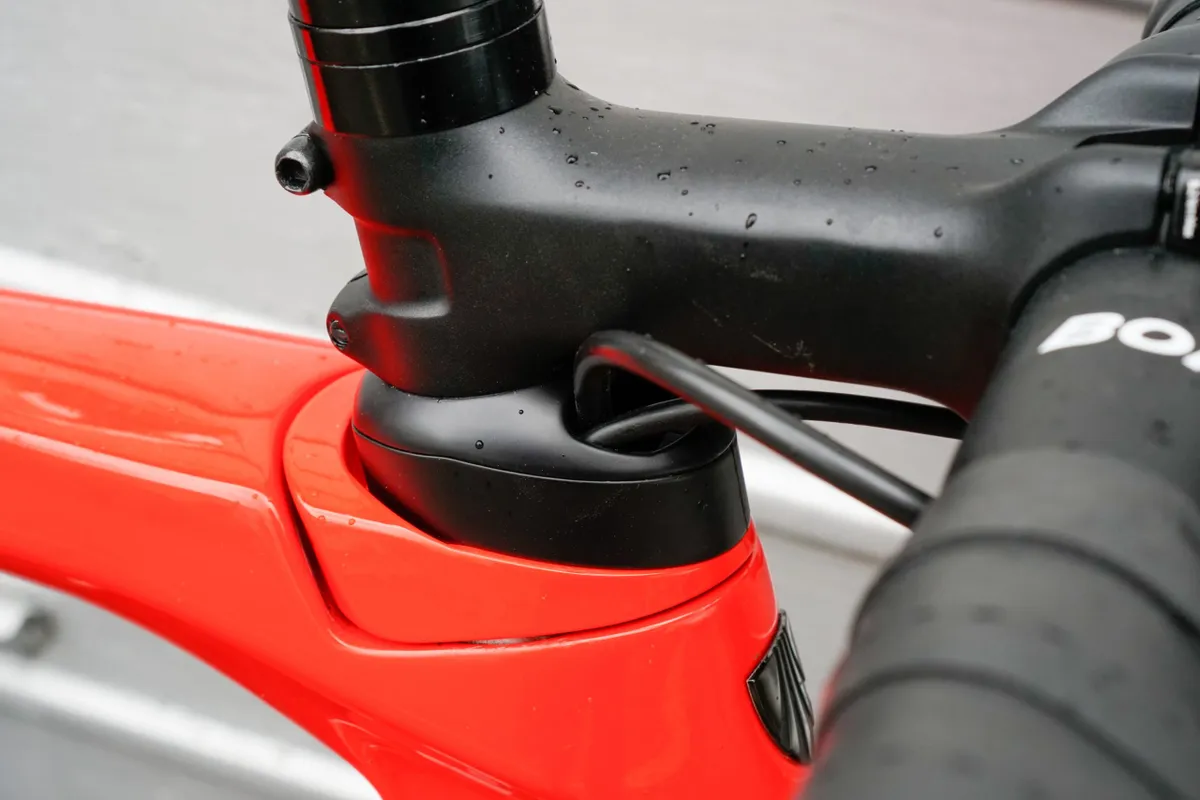
Cable routing through the frame has also been improved, adopting a system similar to that seen on the Domane, though the cables are routed through the front of the headtube here.
The cables first run through a set of split spacers and the non-splittable headset top cover before entering the headtube, neatening things up nicely. There are no internal cable stops and the bike uses full-length housing.
Carbon wheels for (almost) everyone
A new suite of four wheelsets has also been developed to accompany the new Emonda.
The new range starts at $898 for the Bontrager Aeolus Elite 35/50 wheels, rising to $2,399.98 for the top-end Aeolus RSL 37 wheelset.
Moving up through the range, you get lighter layups, posher spokes and faster profiles. All of the hubs are based on DT Swiss’ latest Ratchet EXP internals and the wheels are, of course, tubeless-compatible.
Bontrager Aeolus RSL 37

The top-end wheelset is a 37mm-deep carbon wheelset that, according to Trek, “have an all new rim shape that’s faster than deeper wheels and lighter than shallower wheels all while maintaining stability” – heady claims indeed.
Trek adds that, compared to their unspecified predecessor (presumably the Bontrager Aeolus XXX 2 TLR), the new wheels are 11 per cent faster with a claimed weight of 1,325g.
Notably, the wheels have no rider weight limit and, like all carbon wheelsets from Bontrager, they’re backed by a lifetime warranty.
Bontrager Aeolus Pro 37

The Aeolus Pro 37 features the exact same shape as the top-end wheelset, but uses a slightly heavier layup with a claimed weight of 1,685g.
Bontrager Aeolus Elite 50/35

Rounding out the range is the Elite-level wheelsets.
Available in either 50- or 35mm deep profiles, these wheels use the same D3 shape as seen on the previous-generation wheelset.
The wheels weigh a claimed 1,505g for the 50mm-deep wheels and 1,325g for the 37mm-deep wheels.
Yes, it is disc-only
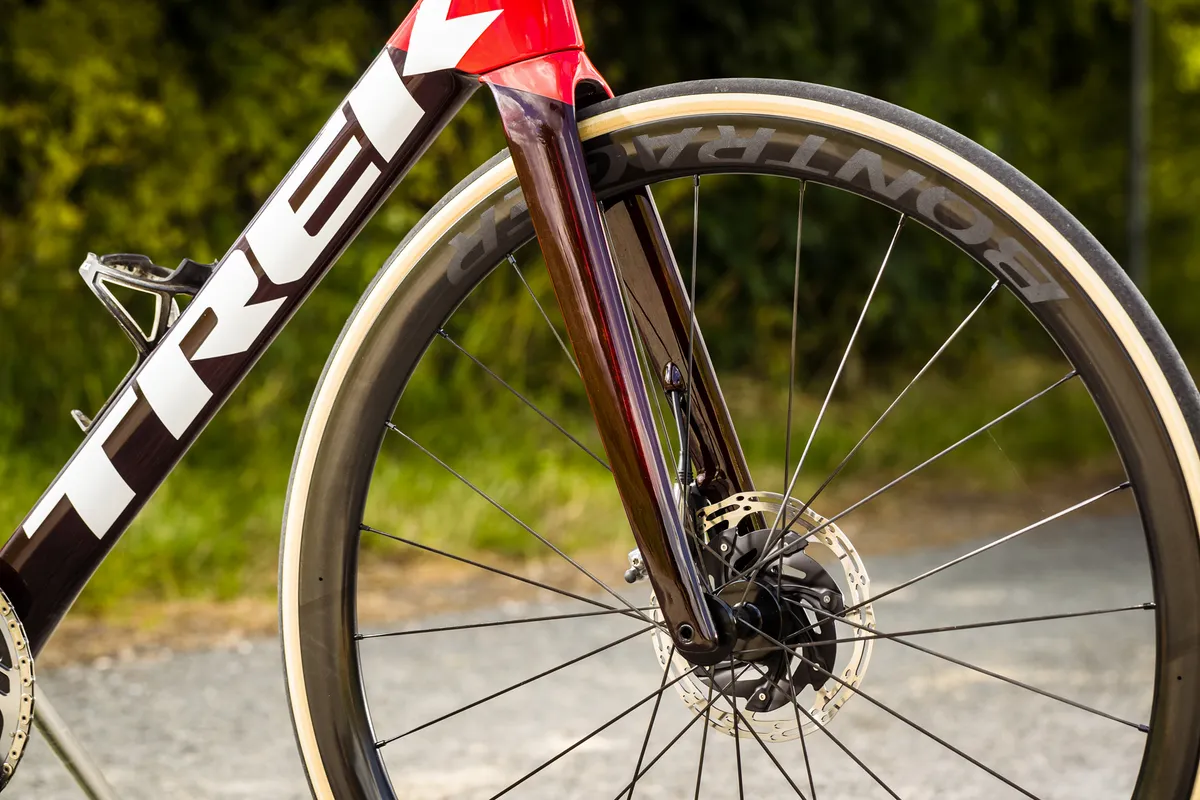
Lastly, yes – the Trek Emonda is disc-only.
This might seem mad for a climber’s bike – it is still very much the case that, if you want to make the lightest bike possible, rim brakes are still the way to go.
However, we’ve known for some time now that the general public simply isn’t interested in rim brakes anymore.
That is a bit of a broad generalization, but Trek is reacting to market trends here and will be looking to reduce ‘redundant’ models in its lineup. You can hardly fault the brand for making the bikes people want to buy.
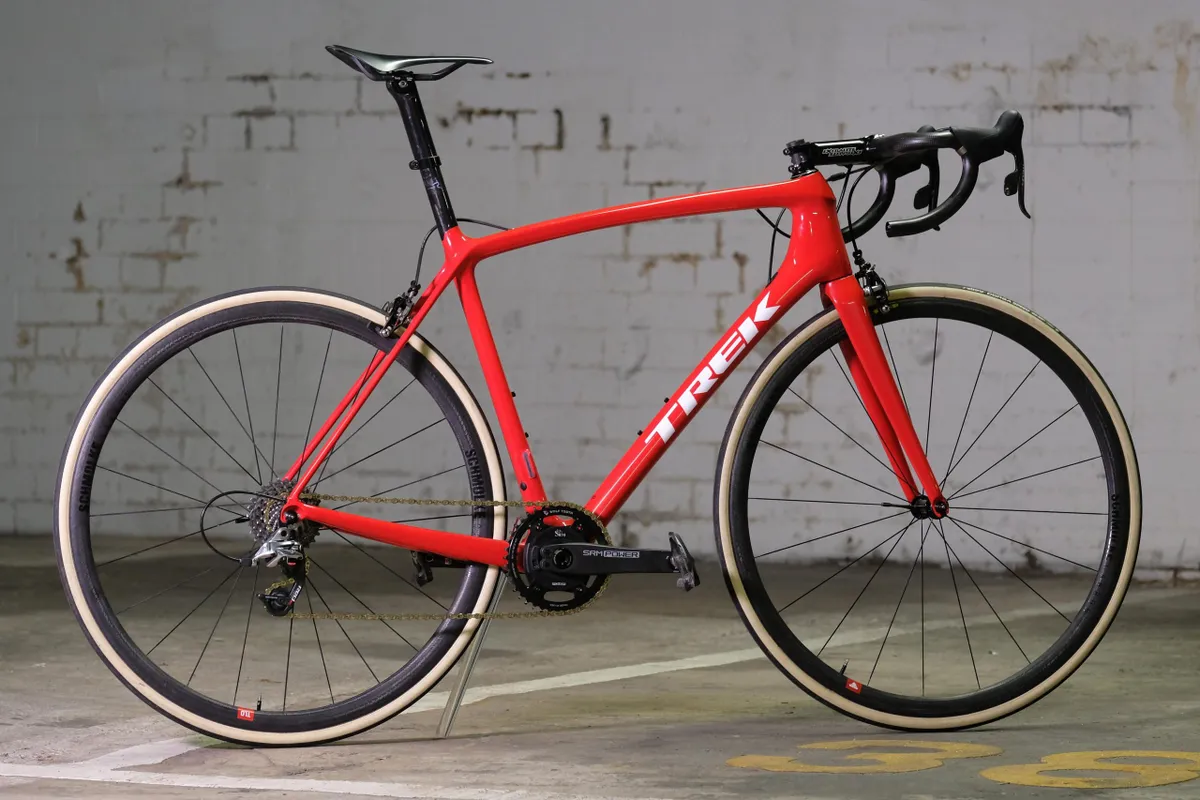
This makes the last generation of the Emonda one of those last truly classic ultra-lightweight carbon road bikes, so pick one up soon if you want your bit of history.

